Allison Bruning's Blog, page 33
December 31, 2013
Cover Reveal: Bailey's Revenge
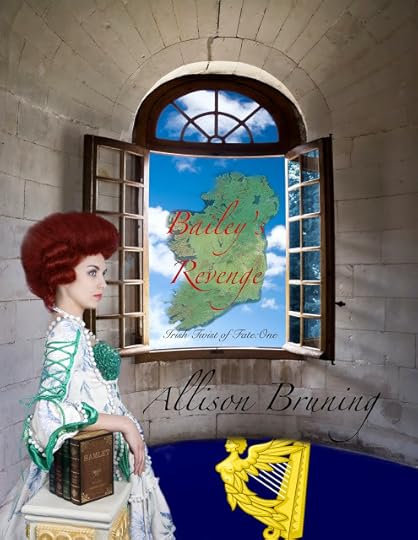
Born into poverty by parents who once ruled over Kilmore, Kathleen McGillpatrick never longed for an affluent life just a peaceful one. Death and destruction follow her as her brother, Bailey McGillpatrick, leads a group of Irish rebels to depose Earl Isaac Turner and reclaim his birthright as heir of Kilmore. Kathleen's chance encounter with Earl Isaac Turner gives Bailey an idea. Since the English, Anglican, Earl Turner is so smitten by the Catholic, Irish woman, Kathleen should seduce him and reclaim the estate through marriage. There's only one problem, Kathleen loves Isaac and despises Bailey. Torn between her love for the English Lord and her family loyalty, Kathleen must chose to honor one or the other and stop Bailey before he destroys everything.
Coming soon via Mountain Springs House!
Published on December 31, 2013 05:30
December 30, 2013
William Booth: A Miserable Early Life #SalvationArmy
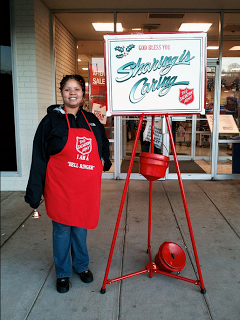 It's that time of season again when we hear the familiar bells of the Salvation Army. We shop their stores and may even donate to help their cause. Yet, many people don't realize that the Salvation Army is more than a movement. It's a church.
It's that time of season again when we hear the familiar bells of the Salvation Army. We shop their stores and may even donate to help their cause. Yet, many people don't realize that the Salvation Army is more than a movement. It's a church.The Salvation Army began in 1852 when William Booth, a British Methodist preacher, began ministering in the streets of London to the poor, homeless, hungry and destitute. William Booth was born on April 10 1829 in Sneinton, Nottingham, England. He was the second son of five children born to Samuel and Mary Booth. The struggles he faced in his childhood would influence him into a life of ministry that would spark a movement.
It All Began With His Father
Samuel Booth was a speculative builder who had been born into poverty. He worked as a nail builder but found the work mundane. Samuel was a difficult man. He was often described as cold hearted, unemotional and cold minded. He was attracted to money and he was driven to acquire as much as possible. Samuel married Sarah Lockitt, nine years his senior, on November 13, 1797 in Nottingham and resided with her there. Sarah gave birth to their only child, William Adcock Booth, either in 1799 or 1800. Sarah died on January 13, 1818 or 1819. Samuel wrote and had the following poem placed upon her gravestone.
With deepest thoughts spectator view thy fateThus mortal pass to an immortal state;Through death's dark vale we hope she's found the way.In those bright regions of eternal day.
Although he wrote the poem Samuel was not a churchgoing man. William Adcock Booth described his father as "religiously blind" and claimed he could "never remember him in a place of worship."
The British Industrial Revolution began in 1770 and ended in 1850. It was during this time England's economy shifted from an agricultural to industrial. The change did not occur overnight but was created by technological advances in several fields. Although it was hard for the society to change, some men took advantage of the opportunities the Industrial Revolution allowed. Samuel Booth was one of these men. He left his life as a nailer behind him and embarked on a new one as an architect. The funds were significant enough to afford him a comfortable life. Samuel was a shrewd business man who was able to convince many he has more wealth than he actually had.
William Adcock Booth married Catherine Edwards on November 14, 1822 and died of tuberculosis on July 26, 1824. While Samuel had done well throughout his widowhood without many abrupt changes it was the death of his son that caused the most significant change in his life.
Soon after his son's death, Samuel visited Ashby-de-la-Zouch in hopes the spas would heal him of his rheumatism. It was here he met Mary Moss, sixteen years his junior, and was smitten by her. Mary was often described as a proud woman with piercing eyes like a duchess. She was also describes as a woman of very few words that had an air of mystery about her. Like Samuel, was of Jewish descent. Samuel proposed marriage but Mary refused. He returned to Nottingham heartbroken but determined. Samuel continued to visit upon Ashby-de-la-Zouch and proposed to Mary every time until she eventually submitted to his cause. The couple were married November 2, 1824 in Ashby-de-la-Zouch and lived in Nottingham where Samuel was an architect. Mary gave him five children - Henry, Ann, William, Emma and Mary. Henry died when he was three years old leaving William the only son with an elder and two younger sisters.
Although Samuel was not involved in his children's lives he did insist that they go to church. William
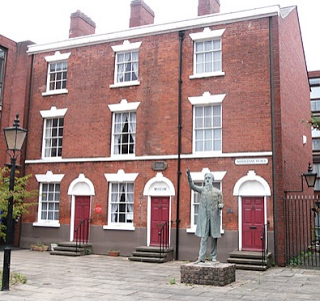 William Booth's Childhood Home
William Booth's Childhood HomeSneinton, Nottingham, Englandand his sisters faithfully went to Sunday School every week. Life was a series of financial ups and downs for the family. Samuel was considered a gentlemen when William was born yet it would not remain. Bad times came, as so often they do, and Samuel struggled. There were a series of unfortunate financial transactions but Samuel pressed on. William had claimed the biggest part of his father's financial situation came when his father had taken employment as a bondsman. The employer went bankrupt and Booth was left to pay the debt on his own. He paid every last farthing and left his family in debt. Another bad financial decision came when Samuel pored his entire life's savings into the cottage his family was living in. In 1837, the economy crashed nationwide. William was eight years old. The circumstances plunged the family further into debt and poverty.
The stress of raising four children and her husband's financial struggles laid heavy upon Mary's heart during William's early years. William once stated of his mother during this time, "She had no time to attend to me." William had a very unhappy childhood. His father ignored him and his mother never encouraged him. When asked of his early years, William often declared is was, "a season of mortification and misery."
William was sent to the Biddulph's Academy in Nottingham, which was owned and operated by a Methodist minister, when he was six years old. Not much is know of his education except that he studied here for seven years. William's father was forced to declare bankruptcy and could no longer afford the luxury of sending his children to a private school. In 1842, Samuel withdrew his son from the academy and was sent to be an apprentice pawnbroker in the poorest area of Nottingham. William hated the job. William had known poverty from his own experience but here he was a witness to starvation, homelessness and other symptoms of extreme poverty. It was an experience that would forever change his life.
Join me next Monday as we continue our in depth look at the life and times of General William Booth.
Published on December 30, 2013 07:51
December 4, 2013
#ISWG: That Editor Must Be Wrong #IAmWriting

One of the hardest things for any writer to do is hand their precious manuscript over to an editor. Why? Because that's our blood, sweat and tears. Those 100,000 or less words aren't just a piece of paper with words. That's our baby. We have a story to tell the world.
But what happens when an editor or beta reader returns your manuscript with a notes that you don't agree with? What if they come back to tell you it needs more work and until you fix those problems it isn't ready to be published? Your bound to feel upset. Don't they understand that this manuscript is the next bestseller?
Before you get so upset that you decide to ignore the editor and self publish your work take a break. Put the notes and the manuscript aside for a few days then come back to it. The editor is not your enemy. They know what works and doesn't work. Their job is to accurately prepare your manuscript for the market. A good editor is an author's best friend. They want you to succeed. I know it can be hard to accept criticism but if your going to be an author you have to accept it.
So calm down and then go back to their notes. Read them carefully and if you still have concerns about what they are telling you approach your editor with them. A good editor will listen to the author. They will walk you through their thought process but they are not a writing coach. If you need a writing coach then hire one. There are plenty of people in the industry who want to help you succeed. Before you hire any of these people, though, be sure to check them out with other authors you trust. There are people out there who want to help you but there are still others who want to make a buck off of people. You have to be careful when choosing a writing coach, editor or publisher. But we'll talk about that another time.
The editor and author need to be friends. They need to know your writing style, your target market and your genre. The more they understand you the more they can help you. My editor, Lee Porche, has been my editor for three years and I wouldn't trade her for anyone else. In fact, she is the editing director of our publishing house and continues to work on all my books. Your editor needs to be your writing best friend. So instead of jumping to hostilities when he or she gives you criticism you need to foster the relationship. Understand their point of view. Sometimes another pair of eyes on your manuscript is a great thing. Authors are their own worst editors.
Published on December 04, 2013 03:26
Yeah, so this is just my life with #Aspergers.
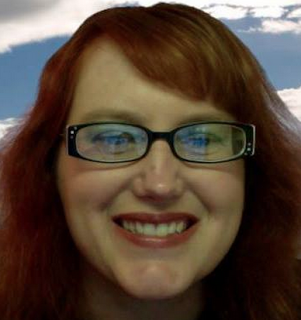 Have you ever had one of those days when everything seems to go wrong? Now intensify that feeling a hundred times. That is how I live my life. Everyday is a battle for me and sometimes it can get so overwhelming that I have a meltdown. I'm not dealing with just the Aspergers but also with a Learning Disability in Math and a problems with my short term memory. It's very hard for me to learn anything to do with math above a fourth grade level. I can do it but it takes much longer to do so than a normal person.
Have you ever had one of those days when everything seems to go wrong? Now intensify that feeling a hundred times. That is how I live my life. Everyday is a battle for me and sometimes it can get so overwhelming that I have a meltdown. I'm not dealing with just the Aspergers but also with a Learning Disability in Math and a problems with my short term memory. It's very hard for me to learn anything to do with math above a fourth grade level. I can do it but it takes much longer to do so than a normal person.There are a lot of myths about people who have Aspergers Syndrome that harm the reputation of the person who has this disorder. Let's face it, people don't like what they don't understand. And being a woman with Aspergers is very different from a man with Aspergers because women with Aspergers can express emotion. We just don't know how to express our own. We are the great con artists. We tent to mimic what other people are feeling in order to survive. The problem is most people, unless they know the women well, never know how that person truly feels.
Another problem is our expression of thoughts and feelings. We have feelings but we just don't know how to express them properly. Females with Aspergers tend to bottle their feelings inward while men can express their anger through violence. A woman's anger is focused inward. I can be very hard on myself. So hard that it is unwarranted. I have problems with negative thoughts, negative self esteem and negative self talk. I drive my emotions inward until I have a meltdown. I don't meltdown very often but when I do I tend to shock people because they never expect if from me.
Life can be truly overwhelming at times for me, like yesterday. I can get overstimulated very easily and that's what happened to me yesterday. Writing is a great emotional release for me. All of the frustrations I wrote about in Elsa from Franklin's point of view are the same frustrations I have had in my own life.
My life has been a struggle and there are people who truly know me that say I am a strong woman. Sometimes though, I don't want to be that strong woman anymore. I just want to crawl up, forget the world and dive inward. I need those moments where I can escape. The problem with that is I can very easily get stuck in that state. You see, the world is a very scary place for a person with Aspergers. We don't understand this world and it scares us. We operate with different values and we don't understand social cues. We are blunt, too honest and can easily insult a person without understanding that we have insulted that person. There have been plenty of social situations where I have just been dumbfounded when someone has been insulted or when something goes wrong. Thankfully, there are people in my life who help me through those situations.
Like Franklin, I have a spouse who loves me so much he takes care of me. Long term relationships,
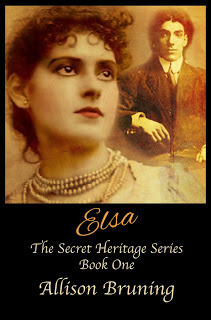 jobs and friendships are very hard for a person with Aspergers to keep because we don't get the social situations. It takes a very unique person to stay by our side through thick and thin. I am very fortunate to have a spouse, an aunt, uncle and best friend who help me. I value those people greatly.
jobs and friendships are very hard for a person with Aspergers to keep because we don't get the social situations. It takes a very unique person to stay by our side through thick and thin. I am very fortunate to have a spouse, an aunt, uncle and best friend who help me. I value those people greatly.Life can be difficult for the people who support the person with Aspergers as well. Let's face it, we are not easy to live with. When I wrote Elsa I took that into consideration. You see I'm not only a person with Aspergers but I'm also someone who has been a caregiver. People with Aspergers make very good caregivers because we have a very tender heart and are overly sensitive. We are not self-centered but are selfless. My husband would tell you that I would give everything we own just to help someone. The problem with that is there have been plenty of times when people have used that against me. I am a doormat because I can't tell when people are being genuine with me or just trying to use me. My friends and family tell me that I am just too nice. But I can't change that. It's just who I am.
I'm not a threat to society. I'm not someone to be feared. I'm someone to be loved, encouraged and cherished. I am a woman with Aspergers.
Published on December 04, 2013 02:58
November 29, 2013
What's In a Name: Traditional #Irish Naming Patterns
Traditional Irish Naming Patterns
Sherlock turned in her direction, picking up his coat from the floor. “He is my friend.” “Liar, he’s Bailey’s best friend which makes him a threat to you and your family.” “I am trying the best that I can to protect you!” “Liar! You’re trying the best you can not to stir the pot because your so scared of Bailey you won’t do anything to turn against him. Sherlock, you’re the elder brother! That’s why you carry your grandfather’s name not Bailey. You have always acted like the youngest. When are you going to stop being so scared of Bailey and act like the man you really are, the heir of Kilmore!” “I’m the heir of nothing. Haven’t you heard, Mary, it’s illegal to be Irish in Ireland?”
From Bailey's Revenge by Allison Bruning
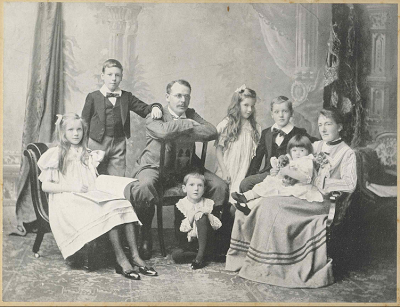 The RJ Mecredy Family Xmas 1901
The RJ Mecredy Family Xmas 1901
http://bit.ly/IkqRCv
Welcome back to my blog. The last time we spoke about Ireland I had introduced you to the white slave trade that occurred from the 15th through the 18th centuries. You can read more about that here: http://allisonbruning.blogspot.com/2013/11/irish-slavery-white-slavery-in-colonies.html
Have you ever wondered why a certain name drops down from generation to generation while other names seem to disappear? Naming patterns have a lot to do with that. A naming pattern is the traditional way a culture names their children. While a naming pattern is the norm for any given culture some parents do not always follow the naming patterns. For example, Countess Kathleen Turner and Countess Calico Collins in Bailey's Revenge were not named using the traditional naming pattern but their older brothers, Sherlock and Bailey, were. Every culture has their own naming patterns and this blog would be too long if we discussed them all.
The traditional Irish family followed this naming pattern:
First born son named after his father's fatherSecond born son named after his mother's fatherThird born son named after his fatherFourth born son named after his father's oldest brotherFifth born son named after his father's 2nd oldest brother or his mother's oldest brother
First born daughter named after her mother's motherSecond born daughter named after her father's motherThird born daughter named after her motherFourth born daughter named after her mother's oldest sisterFifth born daughter named after her mother's 2nd oldest sister or her father's oldest sister
So if you look at this pattern and the passage I gave you from my new book you will see that Sherlock's grandfather was named Sherlock. Bailey was named after his mother's father. When Countess Kathleen Turner and Countess Calico Collins were born their parents did not follow this pattern. I will not tell you why they carry the names they do. You will have to read the book.
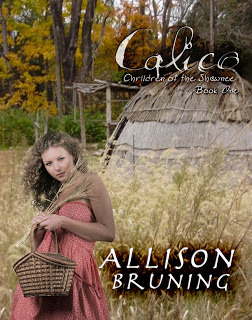
How is that Calico from the series Children of the Shawnee carries the same name as Kathleen's sister? Because Kathleen's daughter, Anne, gave birth to her twins she did followed the traditional Irish naming pattern for Calico but not with Rose. Although Kathleen was alive throughout her daughter's childhood, Anne had a horrible relationship with her mother. She had more of a mother-daughter bond with Kathleen's sister. In honor of that relationship she named her first born daughter after the woman she considered her mother, the Countess Calico Collins.
Sherlock turned in her direction, picking up his coat from the floor. “He is my friend.” “Liar, he’s Bailey’s best friend which makes him a threat to you and your family.” “I am trying the best that I can to protect you!” “Liar! You’re trying the best you can not to stir the pot because your so scared of Bailey you won’t do anything to turn against him. Sherlock, you’re the elder brother! That’s why you carry your grandfather’s name not Bailey. You have always acted like the youngest. When are you going to stop being so scared of Bailey and act like the man you really are, the heir of Kilmore!” “I’m the heir of nothing. Haven’t you heard, Mary, it’s illegal to be Irish in Ireland?”
From Bailey's Revenge by Allison Bruning
 The RJ Mecredy Family Xmas 1901
The RJ Mecredy Family Xmas 1901http://bit.ly/IkqRCv
Welcome back to my blog. The last time we spoke about Ireland I had introduced you to the white slave trade that occurred from the 15th through the 18th centuries. You can read more about that here: http://allisonbruning.blogspot.com/2013/11/irish-slavery-white-slavery-in-colonies.html
Have you ever wondered why a certain name drops down from generation to generation while other names seem to disappear? Naming patterns have a lot to do with that. A naming pattern is the traditional way a culture names their children. While a naming pattern is the norm for any given culture some parents do not always follow the naming patterns. For example, Countess Kathleen Turner and Countess Calico Collins in Bailey's Revenge were not named using the traditional naming pattern but their older brothers, Sherlock and Bailey, were. Every culture has their own naming patterns and this blog would be too long if we discussed them all.
The traditional Irish family followed this naming pattern:
First born son named after his father's fatherSecond born son named after his mother's fatherThird born son named after his fatherFourth born son named after his father's oldest brotherFifth born son named after his father's 2nd oldest brother or his mother's oldest brother
First born daughter named after her mother's motherSecond born daughter named after her father's motherThird born daughter named after her motherFourth born daughter named after her mother's oldest sisterFifth born daughter named after her mother's 2nd oldest sister or her father's oldest sister
So if you look at this pattern and the passage I gave you from my new book you will see that Sherlock's grandfather was named Sherlock. Bailey was named after his mother's father. When Countess Kathleen Turner and Countess Calico Collins were born their parents did not follow this pattern. I will not tell you why they carry the names they do. You will have to read the book.

How is that Calico from the series Children of the Shawnee carries the same name as Kathleen's sister? Because Kathleen's daughter, Anne, gave birth to her twins she did followed the traditional Irish naming pattern for Calico but not with Rose. Although Kathleen was alive throughout her daughter's childhood, Anne had a horrible relationship with her mother. She had more of a mother-daughter bond with Kathleen's sister. In honor of that relationship she named her first born daughter after the woman she considered her mother, the Countess Calico Collins.
Published on November 29, 2013 03:34
November 28, 2013
#Thanksgiving: In Search of The Truth
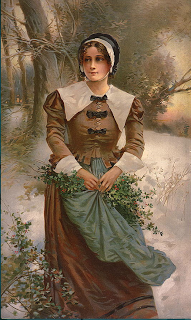 Today, Americans throughout the world will be feasting, watching football, spending time with their family and giving thanks. Thanksgiving is a time of personal mediation upon the blessings we have been given this year. Times are rough but so were the times in which the pilgrims lived.
Today, Americans throughout the world will be feasting, watching football, spending time with their family and giving thanks. Thanksgiving is a time of personal mediation upon the blessings we have been given this year. Times are rough but so were the times in which the pilgrims lived.Americans often imagine the Pilgrims as stoic, overly religious, and pacifists. Most of the stories we tell of about them are myths and if the woman in the picture was alive today she wouldn't recognize the image we often like to portray as her people. Notice the colors she is wearing? The pilgrims did not dress in only black and white. This is a very accurate picture of a pilgrim. Remember the buckles on their shoes? Well they didn't wear those, either.
WHO WERE THE PILGRIMS?
In order to answer that question we must travel further back in time to when King Henry VIII (reigned 1509-1547) ruled England. The national religion of England had been Catholic until 1534, when the king replaced his newly created, Church of England, as the new national religion. Under his decree, every English citizen had to abandon their Catholic faith and become Anglicans. King Henry VIII's daughter, Queen Elizabeth I, finished what her father had begun. The king and his daughter had transformed the faith but there were many skeptics of the new found religion. Many of the skeptics felt the new religion kept the same rigid practices of the Roman Catholic faith. They wanted to return to the way the early Christians had worshipped. This group became the Puritans. The Puritans would establish their own colonies in the New World during the 17th century in what is now known as New England.
Another group of religious reformers were the Separatists. They were considered very radical for their time. The Separatists didn't want to reform the church. They only sought for worship to be conducted in smaller congregational groupings. The Pilgrims were one of many separatists. It was very dangerous for anyone to join these groups because it was illegal to leave the Church of England. England was a very dangerous place for the Pilgrims. They were arrested, fined or imprisoned. When life became too difficult they decided to move their entire congregation to Holland.
The Pilgrims had been able to freely practice their religion in Holland for twelve years. The long stay in the Netherlands had taken its toll on them. Their children had abandoned their English culture for a Dutch identity. The Pilgrims felt if they remained in Holland they would lose their English identity and they did not agree with the Dutch's loose morals. You can read more about their journey to the New World at http://www.plimoth.org/learn/just-kids/homework-help/who-were-pilgrims
THE FIRST THANKSGIVING FEAST
The first thanksgiving feast was actually a harvest celebration in the Fall of 1621. The pilgrims had http://www.biography.com/people/squanto-9491327 .Native Americans had been hosting thanksgiving feasts long before the English had ever landed on their shores and many of the English explorers had taken note of their celebrations. While the Wampanoag had viewed the feast as a time to give thanksgiving to the creator for the bountiful harvest. The Pilgrims ,on the other hand, believed giving thanks to God was a solemn act that could only be devoted in a time of worship. Thus, they did not view the feast as a Thanksgiving like their Native American counterparts did.
invited Squanto and the Pokanoket Wampanoag leader, Massasoit. Massasoit brought 90 of his men to the celebration. Squanto acted as their interpreter. You can learn more about his life at
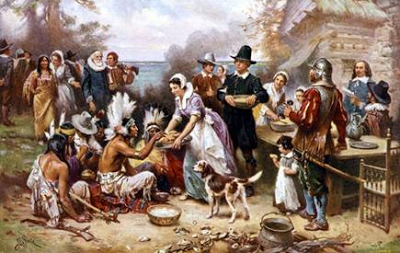
We rarely hear the side of the story from the Native Americans. Here is an account of the First Thanksgiving by the Wampanoag people. http://indiancountrytodaymedianetwork.com/2012/11/23/what-really-happened-first-thanksgiving-wampanoag-side-tale-and-whats-done-today-145807
The Native Americans were very familiar with the English before the Pilgrims had landed. The English had been raiding, kidnapping and raping Native Americans up and down the American East Coast long before the Pilgrims had landed. Infectious diseases such as Measles and Chicken Pox often destroyed villages soon after the English had left. The Native Americans had quickly learned not to trust the English, although some groups still wanted a peaceful relationship with the English. The pilgrims enjoyed a close relationship with the Wampanoag Nation until Massasoit died forty years later. Massasoit was a good leader who had forged many influential treaties with the English that had protected his people.
Want to learn more interesting facts about Thanksgiving? Check out this link. http://hnn.us/article/406

Published on November 28, 2013 05:43
November 27, 2013
I'm a #NaNoWriMo Winner!
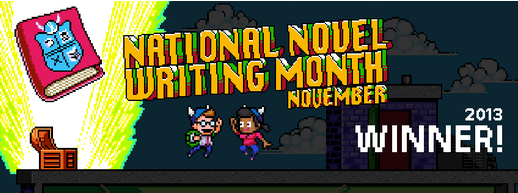
It was a lot of hard work and ignoring people but I finally did it. I finished Bailey's Revenge. I am very excited about my next book. It takes place in 1738 Ireland and is the beginning of my Turner Family Saga. Some of my readers have already read Calico and have requested that I tell the back story of her parents. Well Bailey's Revenge is the story of Kathleen McGillpatrick and Isaac Turner. They are the parents of Alexander and Anna Turner. Anna Turner is Calico's mother.
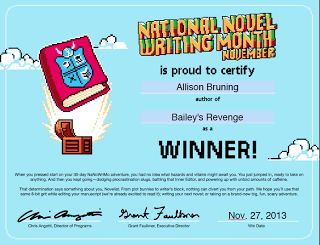
Kathleen McGillpatrick is an Irish Catholic noble who is thrust into a marriage with English Anglican Earl Isaac Turner. Both have fallen madly in love with each other. There is only one problem. Their people hate each other and both their leaders expect them to be loyal to their own cause. Family drama, romance, politics, it's all there with plenty of plot twists and surprises.
Bailey's Revenge is scheduled to be released the first week of January by Mountain Springs House.
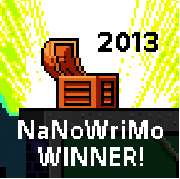
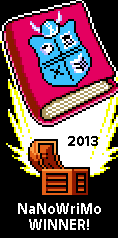
Published on November 27, 2013 08:22
November 19, 2013
In Tribute To One of My Heroes: Mr. Syd Field @fieldink #Iamwriting #author #screenwriter
REST IN PEACE: SYD FIELD
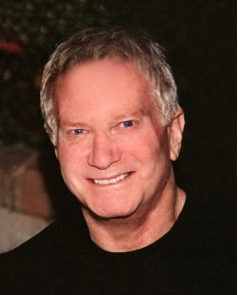 If you don't know who Syd Field is then you probably aren't a screenwriter. As many of you know I am a screenwriter, author and blogger. I have to write. The words flow out of me like water from a fountain. I have always loved to write and tell stories since I was a child. My mother introduced me to Syd Field when I was in high school when she bought one of his books for me. I studied that book inside and out. I used it so much it eventually fell apart.
If you don't know who Syd Field is then you probably aren't a screenwriter. As many of you know I am a screenwriter, author and blogger. I have to write. The words flow out of me like water from a fountain. I have always loved to write and tell stories since I was a child. My mother introduced me to Syd Field when I was in high school when she bought one of his books for me. I studied that book inside and out. I used it so much it eventually fell apart.Syd Field was born on December 19, 1935 in Hollywood, California. The California native wrote several screenplays and television shows. He was a very talented writer who decided to teach the next generation of writers the secrets to his success. His methods revolutionized the screenwriting community. In fact, his books are taught in several film schools throughout the world. Why? Because his methods work.
Syd Field taught screenplays should be written utilizing a three act structure. Within these three acts are pivotal plot points that keep your audience interested in your story. These plot points raise the stakes every time your character comes across them. Syd Field created a paradigm where the writer can lay their story down and then work from that structure as they write. I have not only used this method in my screenplays but also with my novels.
Here's a music video I wrote for Highland Reign that I used Syd Field's Paradigm on.
Syd Field's books include:
Screenplay (1979)The Screenwriter's Workbook (1984)Selling a Screenplay: The Screenwriter's Guide to Hollywood (1989)Four Screenplays: Studies in the American Screenplay (1994)The Screenwriter's Problem Solver: How To Recognize, Identify, and Define Screenwriting Problems (1998)Going to the Movies: A Personal Journey Through Four Decades of Modern Film (2001)The Definitive Guide to Screenwriting (2003)
If you haven't read any of his books I would suggest you start with The Screenwriter's Workbook. All of his books have been updated.
You can learn more about Syd Field on his website at http://sydfield.com/
Published on November 19, 2013 03:57
November 18, 2013
#Irish #Slavery: White Slavery in the Colonies #history #Ireland #Iamwriting
"He (Isaac Turner) was going to take care of the rebel leaders once and for all. Irish law required political prisoners to be sold English families in the American colonies and in West Indies as slaves. He had the perfect buyer for Alexander McGillpatrick and his sons." - Bailey's Revenge by Allison Bruning
Irish Slave Trade
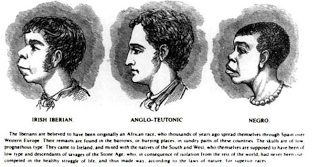
It's something we don't learn about in our history books. We have grand visions of colonists who came to American with visions of starting over. Yet little do you hear about the colonists who had been forcibly removed from their homes and shipped to the colonies as indentured servants. Indentured servitude is just a nice way of saying white slavery. But to understand how and why the Irish were forced into slavery you must understand the back story of it all.
Ireland during the 17th and 18th centuries was a very dangerous place to live if you had been born Irish. The conflict between the English and Irish began when King John became the first Lord of Ireland. He visited the island twice (1185 and 1210) and convinced many of the Irish kings to swear their allegiance to his reign. Ireland had a long history of defending their lands against outsiders who wanted to control their island. Some of the Irish nobles had deemed King John an outsider and wanted nothing to do with him while others believed it was best to swear their fidelity to the English intruder in an effort to maintain peace.
Conflict on between the Irish and English nobles continued for over 100 years. In 1348, the Black Death came to the island killing more English and Normans than Irish. At the end of the plague, the Irish culture and language once again dominated the island. By the end of the 15th century, England had almost forgotten about the island as their attention was now focused on the War of the Roses.
In 1536, King Henry VIII decided to turn English eyes back on Ireland. He spent years trying to place control of the island under the English crown yet he would not live to see the fruit of his labor. The reconquest of Ireland eventually happened during the reigns of Queen Elizabeth the I and King James.
The English greatly dehumanized the Irish claiming the Irish were savages. The practice of dehumanizing the Irish continued overseas in the colonies well into the 20th century. The Irish Slave Trade began under the rule of King James II with his Proclamation of 1625. He declared all Irish political prisoners be sent overseas and sold to English settlers in the West Indies. 30,000 Irish were forcibly removed from their homes and sold as slaves in Barbados. The English crown gave Oliver Cromwell free reign to gather undesirable Irish and sell them overseas. Ireland soon became the place for merchants to obtain white slaves. He rounded up the Catholics and shipped them as slaves to the Caribbean, mainly Barbados. In 1656, Cromwell gathered 2,000 Irish children and sold them to merchants and English settlers in Jamaica. From 1641 to 1652, over 300,000 Irish were sold as slaves. In one single decade, Ireland’s population fell from about 1,500,000 to 600,000.
The Caribbean wasn't the only place the Irish were forced into servitude. Irish slaves were also found in the American colonies. Ireland soon became the place for merchants to obtain slaves because Irish slaves were less expensive to obtain than African slaves.
The Irish Slave Trade lasted from the 15th through the 18th century. You can learn more about the Irish Slave Trade from this site http://humboldtsentinel.com/tag/proclamation-of-1625/
Published on November 18, 2013 02:49
November 17, 2013
#IndieLife: Surviving The Book Reviews
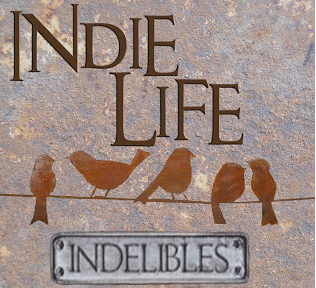
BOOK REVIEWS GONE BAD HOW TO SURVIVE IT ALL
Let's face it. I have a love - hate relationship with book reviews. Most authors do. Book reviews are very important in the literary world because they can either attract or detract your readers from buying your book. Anyone working in the literary world knows this and sometimes if you have made an enemy of a book reviewer or other author they will use this against you. It has happened to me several times. I had a woman who faked eight accounts on Amazon and posted one star reviews on my book, Calico, because she was upset with me. I have had two reviewers who know me, praised my book, then posted two one star reviews on Calico. Then there was the other author who posted a one star account on my book because "he wanted to help me gain readers."
Now was I insulted by these people? Yes. Did I react? No.
I know you're in shock. Let me tell you some secrets about handling those dreaded one and two star reviews.
1) NEVER respond to any reviews whether you are given a positive or negative review.
If you respond to a review it will backfire on you. Readers do not want to pick up a book from an author who criticizes book reviews. They take it as if you will criticize them if you do this and will not feel comfortable with leaving their honest opinion about your book.
Good reviewers will always inform the author they are about to post a low star on book. I've known reviewers who will never post lower than a three star if they don't like your book. It just all depends on the reviewer. A professional reviewer knows the importance of the review rating. The general public, not so much.
2) Be mindful of who you give your book to
When choosing book reviewer for your book you need to chose someone who enjoys reading your genre and the sub genre you wrote in. For example: Although I write historical fiction people who read Elsa may not want to read Calico, even though they are both historical fiction. Calico is written in the voice of the Shawnee people. It's violent and contains sex, rape, molestation. It also takes place in the 18th century. Elsa on the other hand is written in a white woman's voice and deal with mental illness. It takes place in the early 20th century. It has no rape, some sex and no molestation.
Whenever I come across a reviewer who is interested in reviewing my books I let them know about the differences in my books right away. If the reviewer still wants to review one of my book I let them. Now this doesn't always work because I had told this to a reviewer and she still posted a one star review on Amazon warning everyone there was rape, molestation and sex in my book. So you just have to be careful with your reviewers.
3) Negative reviews also generate traffic
This was a hard lesson for me to learn. Just because someone has posted a negative review on Amazon it doesn't always mean it will slow your sales. The more people are talking about your book the more attention it will draw towards your book. People like to read what others are talking about. That's why social media and reviews are so important.
4) It's all about balance.
A book that has ten reviews or more on it will gain more attention from readers and Amazon. Yet you don't want all 5 stars. You want balance. Readers will not read a book that has all one stars. It just won't work. You want your reviews to have a mix of all the stars with most of your ratings in the five stars. For example, here's the rating I have on Amazon for Calico.
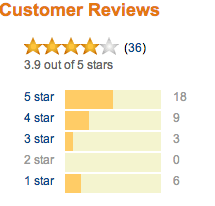 Calico has been released for five years and I have three editions of the book. The people who most respond favorably to my novel are those who either Native American or are interested in Native American culture. People want to read this book because I have eighteen five star and nine four star reviews.
Calico has been released for five years and I have three editions of the book. The people who most respond favorably to my novel are those who either Native American or are interested in Native American culture. People want to read this book because I have eighteen five star and nine four star reviews.5) NEVER buy your reviews
You may be tempted to stock pile your reviews so you can get a lot of favorable reviews. Don't do this. Your readers aren't stupid. They can tell when authors buy reviews. Readers want to read authentic reviews by other readers not other authors.
Published on November 17, 2013 04:16



